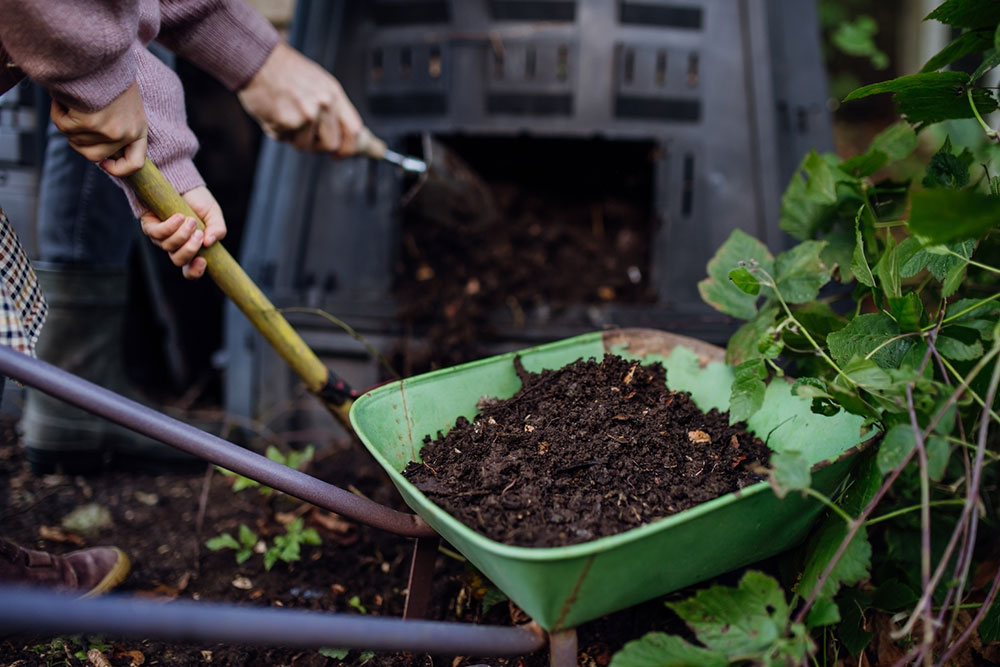Liquid Fertilizer -Types, Uses, Costs, and More
The idea of having a lush green lawn is fascinating, but starting the process or maintaining it gets challenging. One might have to use liquid lawn fertilizers to achieve healthy and sustainable growth. This method has become increasingly popular because of its ease of use and quick results. But, before using liquid fertilizers, it is important to keep a few things in mind to make an informed decision.
Types
Liquid fertilizers are available in three different forms.

- Pre-mixed liquid
As the name suggests, this type is pre-mixed with ready-to-use components. Pre-mixed liquid fertilizers are already blended with water before they are sold. These also come with convenient hose-end sprayers. All one has to do is attach them to the garden hose and turn on the water without having to go through a dilution process. - Powder
Water-soluble (powder) fertilizers require mixing water with a powdery substance rich in nutrients and minerals. This option is more suitable for gardeners as powder fertilizer comes in small packages that cannot cover an entire lawn. - Concentrate
Experts usually purchase this type of liquid fertilizer because it is available in a highly concentrated form. This option allows individuals to pick and tailor the NPK (nitrogen—N, phosphorus—P, and potassium—K) ratio to the specific needs of the lawn. Remember to mix these thoroughly with water, as excess amounts may adversely affect the lawn.
How to apply?
The best way to apply liquid fertilizer without encountering any issues is to follow the instructions provided in the manual carefully. Whether one opts for a pre-mixed, powdered, or concentrated fertilizer, the application instructions are more or less the same. Once the solution is prepared, the next steps are crucial:
- Shake the package thoroughly, remove the cap, and attach the sprayer nozzle to the pouch.
- Next, connect the hose to the nozzle and turn on the water. Open the valve to start spraying.
- Focus on spraying a light, even coat of the solution across the entire lawn area. If required, spray another round to ensure complete coverage. This process should take about 10 to 15 minutes.
- Once the application process is complete, carefully store the liquid lawn fertilizer nozzle sprayer for future use.
- Allow the lawn to dry for a few hours.
Additional things to know about the application process
Before the application process, certain important factors must be considered.
- Consider applying liquid fertilizers in warmer months, preferably in the evening. Applying the solution to dry ground during the day may hinder its effectiveness.
- Ensure the soil is wet before application. This ensures that the plants can absorb the fertilizer effectively.
- Not all plants require liquid fertilizers. So, before selecting a particular liquid fertilizer, verify if it is suitable for the specific plants.
Benefits
Liquid fertilizers may be complex to use, but their benefits can be equally effective compared to other types of fertilizers.
- Even distribution
The solution of liquid lawn fertilizers can be distributed evenly and easily, and it can soak into the soil, allowing for uniform coverage. This even distribution guarantees that the entire lawn receives an equal amount of essential nutrients. - Quick effect
Liquid fertilizers are known for their ability to penetrate the soil quickly and take effect promptly. This speedy process makes them suitable for early application during the growing seasons, as they support the healthy formation of roots. - Low nitrogen loss
Nitrogen is a crucial element in plant growth and yield. A liquid fertilizer could prevent the loss of this property to about 10%, which is low compared to other fertilizers. - Easy to handle
The fertilizer’s liquid nature makes it easier to handle. The solution can be easily administered through the irrigation system as a fine spray. It also helps one determine the right concentration of the components. - Convenient storage
Liquid fertilizers are generally stored in sealed containers, eliminating any issues associated with the storage process. These containers are space-efficient, less sensitive to seasonal or environmental factors, and present a lower risk of fire compared to traditional fertilizers. - Versatile in nature
Liquid lawn fertilizers can easily be mixed with other products to provide the plants with the ideal nutrition they require.
Price
The cost of liquid fertilizers varies based on different factors – lawn size, number of units required, sun exposure, and type of grass/plants, among others. On average, fertilizing a lawn may cost between $150 and $554. If one hires a professional service to do the job, the prices may go up. But, to reduce costs, one could consider working with a company on an annual plan. Alternatively, liquid fertilizers are available for purchase online or at a local store, which homeowners can apply, potentially resulting in savings.
Liquid fertilizers present a versatile and efficient solution for boosting plant growth and soil health. While their initial cost may be higher when compared to traditional fertilizers, their efficiency in nutrient delivery and ease of application often results in higher yields and overall cost-effectiveness.




